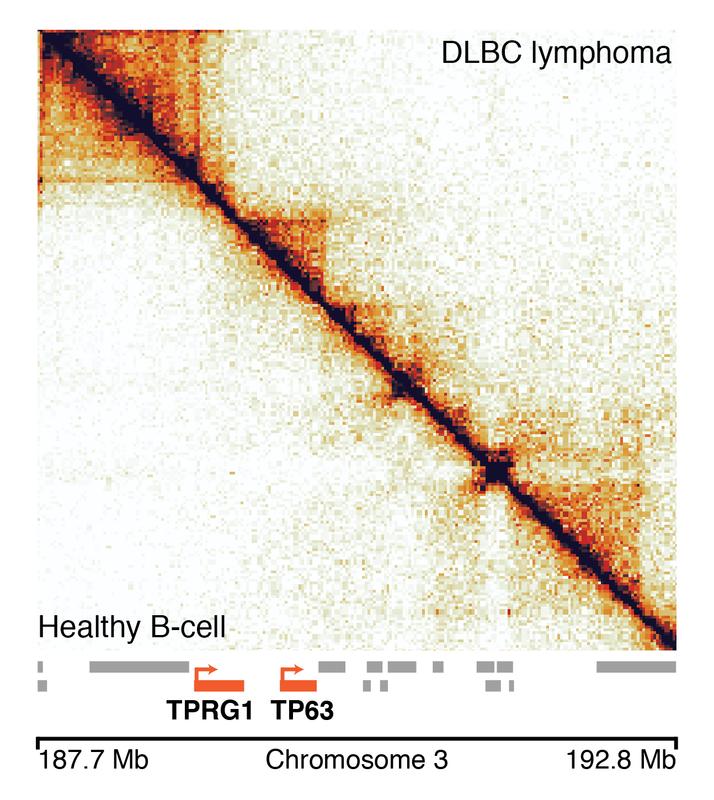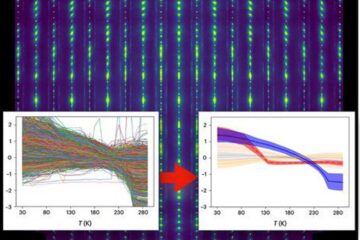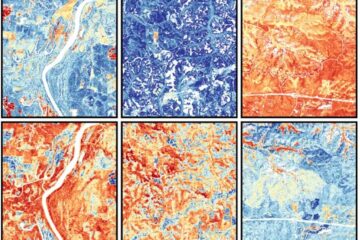Nuclear architecture diagnostics within reach of the clinic

Representation of 3D genome structure for cancer (above the diagonal) and healthy B-cells (below the diagonal). Previously known cancer-related genes are highlighted in red. MPI Münster / Vaquerizas lab
Scientists at the Max Planck Institute of Molecular Biomedicine in Münster and of the Medical Faculty of the University of Münster have developed a technique that allows the characterisation of the three-dimensional organisation of the DNA in the nucleus directly in patient’s cells.
The research, published in Nature Communications (online November 29, 2018), will help in diagnosing disease and, in future, guiding therapeutic intervention.
Each cell in our organism has a roughly 2-meter-long molecule of DNA – our genetic information – that needs to be properly packed inside a few micron nucleus. How the DNA is organised in the nucleus is known to play a key role for normal cellular development and function, since mutations in the mechanisms that control this process lead to developmental disorders or diseases such as cancer.
However, the exact role that the organisation of the genome plays in disease is currently unknown, since scientists have lacked the ability to thoroughly examine the 3D organisation of the genome in diseased cells.
In this new research, scientists have performed a proof-of-principle study demonstrating that the 3D genome can be directly examined in diseased cells from patients.
Subtle improvements implemented in this new technique to measure three-dimensional genome architecture, called Low-C, allowed researchers to lower the amount of biological material initially required to perform the experiments.
This enabled them to determine the spatial architecture of a diffuse large B-cell lymphoma genome.
“To be able to examine the genome architecture of the specific cells that cause disease is really exciting, since currently we do not know how the 3D genome is altered in these cells”, says Dr Noelia Díaz, a postdoctoral fellow in the Vaquerizas Laboratory who led the experimental part of the project.
The researchers then performed an advanced computational analysis of the data that revealed some surprising observations. First, the scientists were able to detect genome rearrangements – changes in the normal sequence arrangement of our genome that are a key feature of many cancers – and detected both novel and known translocations characteristic of the disease, which were then experimentally validated.
“It was reassuring to see our computational predictions validated experimentally”, says Dr Kai Kruse, a postdoctoral fellow in the Vaquerizas Laboratory who performed the computational analysis of the data.
More power to study cancer cells
But the data held more surprises. When the researchers examined a finer level of chromatin organisation into topological domains (short sections of the genome that are folded into compact knots resembling balls of yarn), they observed that new domains were present in disease cells in regions of the genome that would otherwise present no domains in healthy cells.
“This was a surprising finding, since the 3D architecture of fully developed cells is thought to be rather invariant”, says Dr Juanma Vaquerizas, a Group Leader at the Max Planck Institute for Molecular Biomedicine in Muenster, who supervised the research.
“We could observe that these new structural domains appear in regions that contain genes previously known to be associated with cancer and disease, but the functional role of these new domains is currently unknown”, says Vaquerizas.
The researchers aim now to extend their studies to more samples, to be able to determine the impact that changes in the 3D structure of the genome play in disease and to use this information in the design of personalised patient-specific treatment options.
Dr. Juan M Vaquerizas
Group leader
Tel.: +49 251 70365-580
Fax: +49 251 70365-599
E-mail: jmv@mpi-muenster.mpg.de
Website: www.vaquerizaslab.org
Noelia Díaz, Kai Kruse, Tabea Erdmann, Annette M. Staiger, German Ott, Georg Lenz, Juan M. Vaquerizas. Chromatin conformation analysis of primary patient tissue using a low input Hi-C method. Nature Communications, 29. November 2018, DOI: 10.1038/s41467-018-06961-0.
https://www.mpi-muenster.mpg.de/425089/20181122-lowc-vaquerizas
Media Contact
All latest news from the category: Life Sciences and Chemistry
Articles and reports from the Life Sciences and chemistry area deal with applied and basic research into modern biology, chemistry and human medicine.
Valuable information can be found on a range of life sciences fields including bacteriology, biochemistry, bionics, bioinformatics, biophysics, biotechnology, genetics, geobotany, human biology, marine biology, microbiology, molecular biology, cellular biology, zoology, bioinorganic chemistry, microchemistry and environmental chemistry.
Newest articles

Machine learning algorithm reveals long-theorized glass phase in crystal
Scientists have found evidence of an elusive, glassy phase of matter that emerges when a crystal’s perfect internal pattern is disrupted. X-ray technology and machine learning converge to shed light…

Mapping plant functional diversity from space
HKU ecologists revolutionize ecosystem monitoring with novel field-satellite integration. An international team of researchers, led by Professor Jin WU from the School of Biological Sciences at The University of Hong…

Inverters with constant full load capability
…enable an increase in the performance of electric drives. Overheating components significantly limit the performance of drivetrains in electric vehicles. Inverters in particular are subject to a high thermal load,…





















